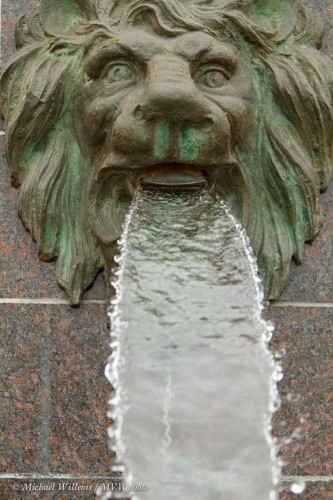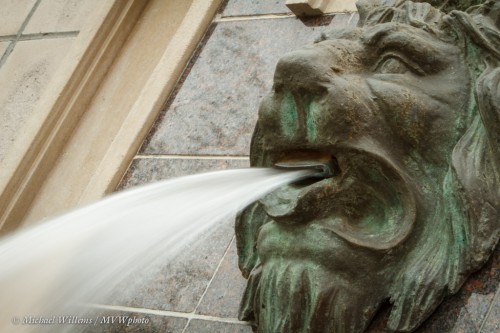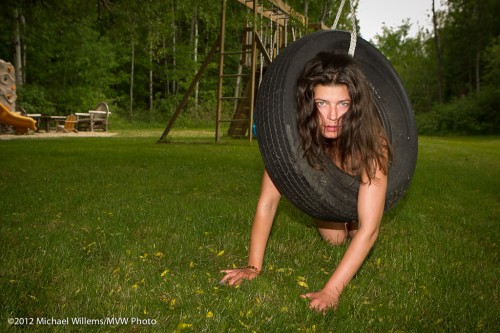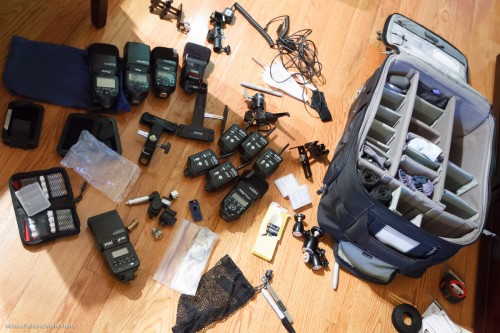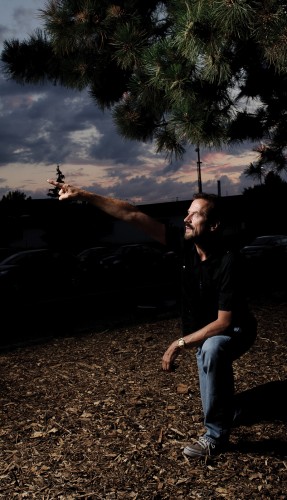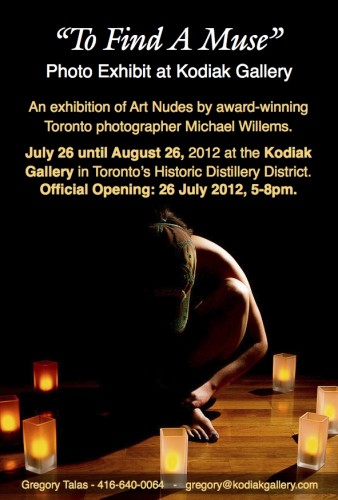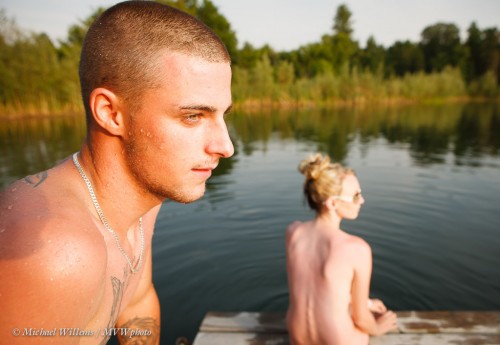Shooting a river, waterfall, or as in this case, fountain?
In that case consider not shooting it as above – if it is a moment in time (waves hitting rocks) you can. but when it is a flow, show it like a flow:
To do that:
- Use manual or Tv/S mode (shutter priority)
- Use a shutter speed of 1/4 to 3 seconds.
- Use a tripod – this is a must.
- If the light is too bright even with low ISO and high f-number, then use a simple dark filter (a “neutral density filter”).
Tip: if you do not have an ND filter, a polarizer will also darken the light by a couple of stops.
And now a secret: I shot that handheld, at 1/4 second, with no tripod. The secret? Experience; a steady hand; holding the long lens at the end; sitting down steady; and especially, a stabilized lens. Got the shot in one try!

